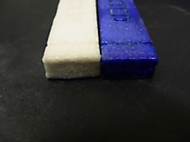Ancient Egyptian Faience inpires novel 3D printed ceramics
 Researchers at the University of the West of England (UWE) Bristol are investigating ancient Egyptian Faience ceramic in order to develop a similar material which could be used by today’s 3D printers. The non-plastic ceramic material is interesting since it could be glazed and vitrified in a single go, thus significantly reducing the time and energy needed to produce objects with such properties.
Researchers at the University of the West of England (UWE) Bristol are investigating ancient Egyptian Faience ceramic in order to develop a similar material which could be used by today’s 3D printers. The non-plastic ceramic material is interesting since it could be glazed and vitrified in a single go, thus significantly reducing the time and energy needed to produce objects with such properties.
Faience was first used 7,000 year ago and it considered as the first glazed ceramic material invented by man. It is distinct from Italian Faience or Majolica and it is composed of quartz and alkali fluxes. The self-glazing properties of the material motivated Professor Stephen Hoskins, Director of UWE’s Centre for Fine Print Research and David Huson, Research Fellow, to undertake a major investigation into its usability as a self-glazing 3D printed ceramic.
“It is fascinating to think that some of these ancient processes, in fact the very first glazed ceramics every created by humans, could have relevance to the advanced printing technology of today. We hope to create a self-glazing 3D printed ceramic which only requires one firing from conception to completion rather than the usual two. This would be a radical step-forward in the development of 3D printing technologies”, said Professor Hoskins. “As part of the project we will undertake case studies of craft, design and fine art practitioners to contribute to the project, so that our work reflects the knowledge and understanding of artists and reflects the way in which artists work.”
This three-year research project will investigate three methods of glazing used by the ancient Egyptians: application glazing which is similar to modern glazing methods, efflorescent glazing which uses water-soluble salts, and cementation glazing where the object is buried in a glazing powder in a protective casing, then fired.
These techniques will be used as a basis for developing contemporary printable alternatives, and the project will be focused on determination of the best rates of deposition, the inclusion of flocculants and methods of drying through heat whilst printing.
The project includes research of colored ‘frit’ – a substance used in glazing and enamels method used by the Egyptians. UWE researchers will investigate the use of colored frits and oxides in order to try to create the broadest range of colors.
Once developed, this body will be used to create a ceramic extrusion paste that can be printed with a low-cost 3D printer, thus enabling ceramic artists, designers and craftspeople to print 3D objects in a ceramic material.









Leave your response!